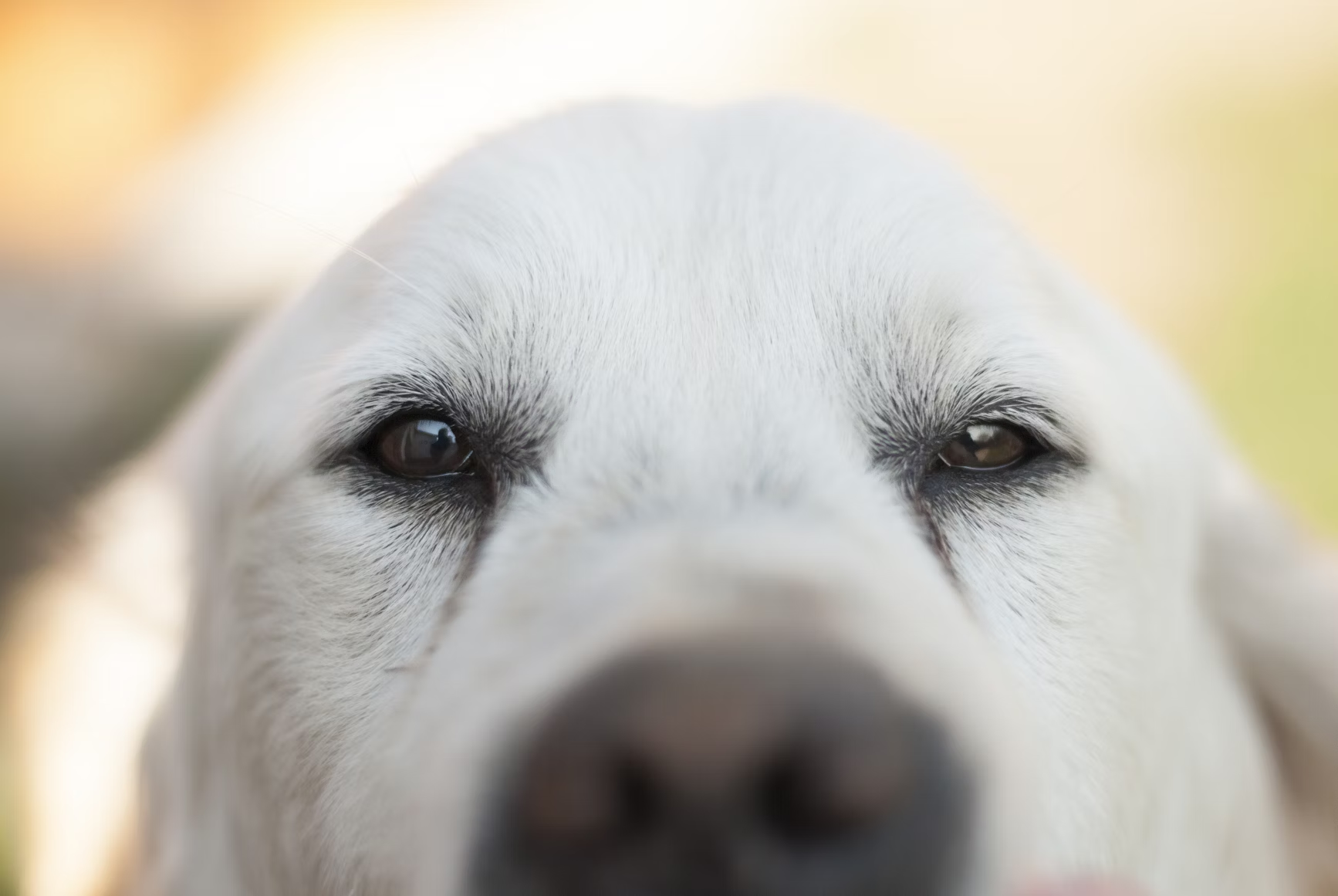
Common Dog Eye Issues and How to Treat Them
Your dog’s eyes are more than simply windows into its soul; they are also significant indicators of its overall health. Dogs, like people, can suffer from a variety of eye disorders, some mild and others significant. Understanding common dog eye problems, knowing what signs to look out for, and learning when to seek veterinary care can make all the difference in protecting your pet’s vision.
In this blog, we’ll walk you through the most common eye problems of dogs, what causes them, and how they’re typically treated.
Conjunctivitis (Pink Eye)
Conjunctivitis is one of the most frequent eye diseases in dogs, caused by inflammation of the conjunctiva—the thin tissue that covers the white part of the eye and the inner eyelids.
Symptoms:
- Redness in the whites of the eyes
- Excessive tearing or discharge
- Squinting or blinking more than usual
- Pawing at the eyes
Causes:
- Allergies (pollen, dust, smoke)
- Bacterial or viral infections
- Irritants like shampoo or debris
Treatment:
Veterinarians typically recommend medicinal eye drops or ointments, depending on the cause. If allergies are the source, managing the underlying allergen is also essential.
Dry Eye (Keratoconjunctivitis Sicca)
Dry eye, or KCS, occurs when your dog’s eyes don’t produce enough tears to keep the surface moist, leading to irritation and potential damage.
Symptoms:
- Thick, sticky eye discharge
- Red or dull-looking eyes
- Squinting or blinking
- Recurring eye infections
Treatment:
Dry eye is often treated with prescription lubricating eye drops or immunosuppressive medication. In severe cases, surgery may be needed. This condition requires lifelong management.
Cataracts
Cataracts are one of the most common eye problems in dogs, particularly in older ones. They appear as a cloudy or milky film over the eye and can range from small spots to total lens opacity.
Causes:
- Ageing
- Diabetes
- Genetics (common in certain breeds like Poodles, Cocker Spaniels, and Huskies)
Symptoms:
- Cloudy appearance in one or both eyes
- Bumping into walls or furniture
- Hesitancy in dim lighting
Treatment:
The only effective therapy for cataracts is surgical excision by a veterinary ophthalmologist. Not all dogs are candidates for surgery, so a vet consultation is essential.
Glaucoma
Glaucoma is a serious condition caused by increased pressure within the eye, damaging the optic nerve and potentially leading to permanent blindness.
Symptoms:
- Bulging eye or enlarged appearance
- Redness and cloudiness
- Vision loss
- Squinting and pain (may paw at the eye)
Treatment:
Glaucoma is considered a medical emergency. Treatment options include pressure-reducing medications, pain relief, or surgery to relieve the pressure and preserve vision. Early intervention is crucial.
Corneal Ulcers
Corneal ulcers are open sores on the surface of the eye, often caused by trauma, infection, or untreated dry eye. They’re painful and must be treated quickly to prevent vision loss.
Symptoms:
- Excessive blinking or squinting
- Visible damage to the eye
- Cloudiness or white spots on the eye
- Discharge
Treatment:
Veterinary treatment usually includes antibiotic or anti-inflammatory eye drops, pain relief, and possibly surgery in deep or non-healing ulcers. The sooner the ulcer is treated, the greater the probability of complete healing.
Cherry Eye
Cherry eye is a common issue involving dogs’ third eyelid, a protective inner eyelid that helps moisten the eye. When the gland of this eyelid becomes swollen or displaced, it appears as a red or pink lump in the inner corner of the eye.
Symptoms:
- Visible red bump at the corner of the eye
- Excess tearing or discharge
- Occasional squinting
Treatment:
Treatment usually involves surgery to reposition the gland. Without surgery, the condition may worsen and cause chronic dry eye or other complications.
Common Signs of Eye Problems in Dogs
Regardless of the specific condition, several signs may indicate something is wrong with your dog’s eyes:
- Redness or inflammation
- Cloudy or bluish eyes
- Discharge (clear, yellow, green)
- Squinting or blinking excessively
- Rubbing or pawing at the eye
- Light sensitivity
- Avoiding stairs or bumping into objects
If you experience any of these signs, you should visit your veterinarian.
Home Care Tips for Eye Health
While regular vet visits are essential, there are things you can do at home to reduce the risk of eye problems in dogs:
- Gently wipe away discharge with a clean, wet towel.
- Keep hair around the eyes trimmed
- Use vet-approved eye wipes or lubricating drops (never use human products)
- Keep your dog away from dusty and smoky places.
- Avoid allowing dogs to dangle their heads out the car window because particles may hurt the eye.
When to See a Vet
Some dog eye problems require immediate attention. Seek veterinarian attention immediately if you notice:
- Sudden vision loss
- Severe swelling or bulging
- Blood or pus in the eye
- Excessive pain or sensitivity to light
- Any foreign object stuck in the eye
Timely treatment can make the difference between a minor issue and permanent damage.
Eye health is vital to your dog’s comfort, mobility, and quality of life. Many eye disorders in dogs can be managed or even prevented with early detection and proper care. Pay attention to any changes in your dog’s eyes and don’t wait too long to get them checked out. Your furry pet is counting on you.
Have questions about your dog’s eye health? Book a vet appointment today and let a professional guide you in protecting your pet’s precious vision.


